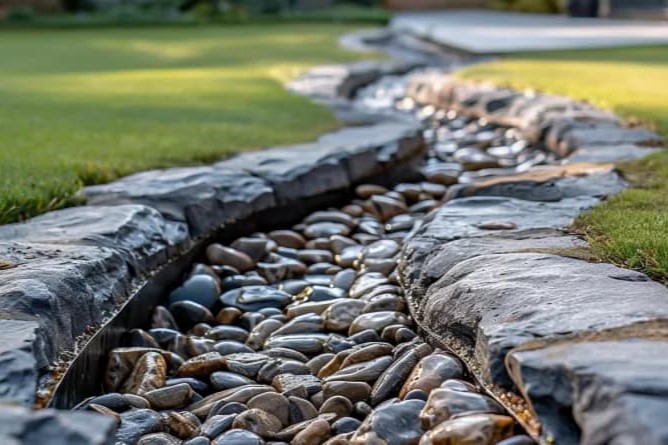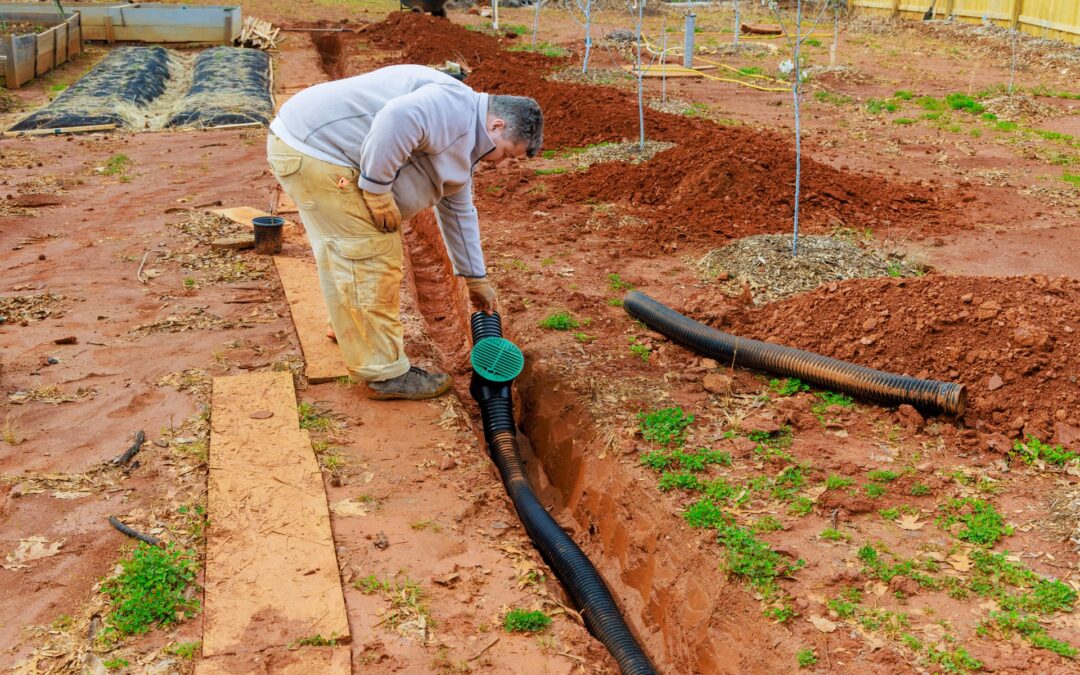How Landscapers in Slidell Prevent Water Damage
Excess water creates serious problems in outdoor environments, leading to erosion, root suffocation, and foundation weakening. A landscape without effective drainage quickly turns into a breeding ground for mold, pests, and plant diseases. Seasoned landscapers focus on precise drainage solutions to safeguard both vegetation and built structures. Landscapers in Slidell implement advanced water management techniques to enhance durability and ensure long-term functionality in outdoor spaces.
- Poor drainage accelerates soil displacement, removing vital nutrients.
- Excessive moisture fosters fungal outbreaks and weakens plant roots.
- Standing water attracts invasive insects such as mosquitoes and termites.
Landscapers Adjust Terrain for Effective Drainage
Sloping and contouring land correctly directs water away from critical areas, preventing unnecessary accumulation. A homeowner dealing with a persistently damp, unusable yard often faces an issue related to improper grading. Knowledgeable landscapers assess elevation levels and make subtle but impactful changes to guide excess water toward designated drainage zones. Thoughtful grading strategies protect lawns, gardens, and patios from excessive moisture retention.
- Proper slope adjustments channel runoff away from home foundations, avoiding costly structural repairs.
- Well-planned land shaping minimizes the likelihood of oversaturated lawns and waterlogged soil.
- Correct topographical modifications enhance both landscape beauty and functionality.
Top Drainage Methods Landscapers Implement
Each property presents distinct drainage concerns, requiring customized solutions. A backyard prone to water pooling might benefit from a strategically placed French drain that efficiently channels excess moisture underground. Properties dealing with heavy rainwater runoff often require dry creek beds that blend function with aesthetics. Expert assessment ensures that drainage systems provide long-term effectiveness without disrupting landscape appeal.
- French drains prevent soil oversaturation by redirecting groundwater.
- Dry creek beds offer a visually appealing way to manage excess runoff.
- Catch basins collect and redistribute rainwater to reduce flooding risks.
Why Slidell Landscapers Prefer Permeable Surfaces
Non-porous pavement increases runoff problems by preventing natural water absorption. Landscapers opt for materials that enhance permeability, reducing strain on storm drains. A patio constructed with porous pavers encourages rainwater infiltration, restoring groundwater levels rather than directing excess water to already burdened drainage systems. This method ensures better water control while promoting environmentally friendly landscaping practices.
- Permeable pavers reduce surface runoff, decreasing the chance of minor flooding.
- Gravel and mulch boost soil permeability while reinforcing landscape stability.
- Rain gardens effectively absorb surplus moisture, preventing standing water buildup.
Indicators of Inadequate Drainage Landscapers Identify
Recognizing drainage problems early helps prevent more significant landscape complications. Wilted grass, constant puddles after storms, and shifting soil indicate drainage inefficiencies. Landscapers carefully evaluate these warning signs before implementing necessary corrective measures. Addressing minor drainage concerns promptly saves time and prevents costly damage in the long run.
- Pooled water in the same spots signals inefficient runoff redirection.
- Eroding soil around patios or pathways points to drainage deficiencies.
- Unhealthy vegetation often reflects imbalanced moisture distribution.
How Landscapers Maintain Efficient Drainage Systems
Even expertly installed drainage networks require ongoing maintenance to remain fully functional. Debris accumulation, compacted soil, and seasonal weather shifts can hinder drainage efficiency. Landscapers conduct thorough inspections and clean drainage components to preserve optimal performance. Routine evaluations ensure long-term water management success.
- Clearing organic debris prevents water flow obstructions.
- Adjusting drainage configurations accounts for shifting weather patterns.
- Monitoring soil absorption capacity maintains steady water movement.

Long-Term Advantages of Well-Planned Drainage
A properly managed drainage system preserves soil health, prevents property deterioration, and maximizes outdoor usability. Strategic water management minimizes erosion, mitigates structural risks, and enhances landscape longevity. Landscapers in Slidell incorporate comprehensive drainage strategies into their designs to protect both the environment and property investments. Effective drainage solutions ultimately lead to a more functional, visually appealing, and structurally sound outdoor space.
Key Drainage Considerations from Skilled Landscapers in Slidell
- Thoughtful grading and contouring control water flow, reducing soil erosion risks.
- Permeable materials promote moisture infiltration, lessening surface runoff issues.
- Proper drainage safeguards plant health and prevents excess moisture buildup.
- Regular maintenance ensures long-term drainage effectiveness and performance.
Common Questions About Drainage Design in Landscaping
Why is effective drainage essential for landscaping projects?
Poor drainage leads to water pooling, erosion, and plant decay. Well-planned drainage protects both softscape and hardscape elements, ensuring durability and usability.
How do landscapers improve outdoor drainage?
Experts use grading techniques, French drains, dry creek beds, and permeable materials to control water movement and prevent accumulation.
What problems arise from ignoring drainage concerns?
Overlooking drainage issues results in soil degradation, foundation instability, plant disease, and an increase in mosquito breeding grounds.
Are drainage enhancements necessary for all landscapes?
Not all properties require extensive modifications, but any site with excessive moisture, frequent puddles, or eroding soil benefits from improved drainage planning.
How frequently should drainage components be inspected?
Landscapers recommend seasonal assessments to remove debris, check water flow patterns, and maintain proper drainage function.


